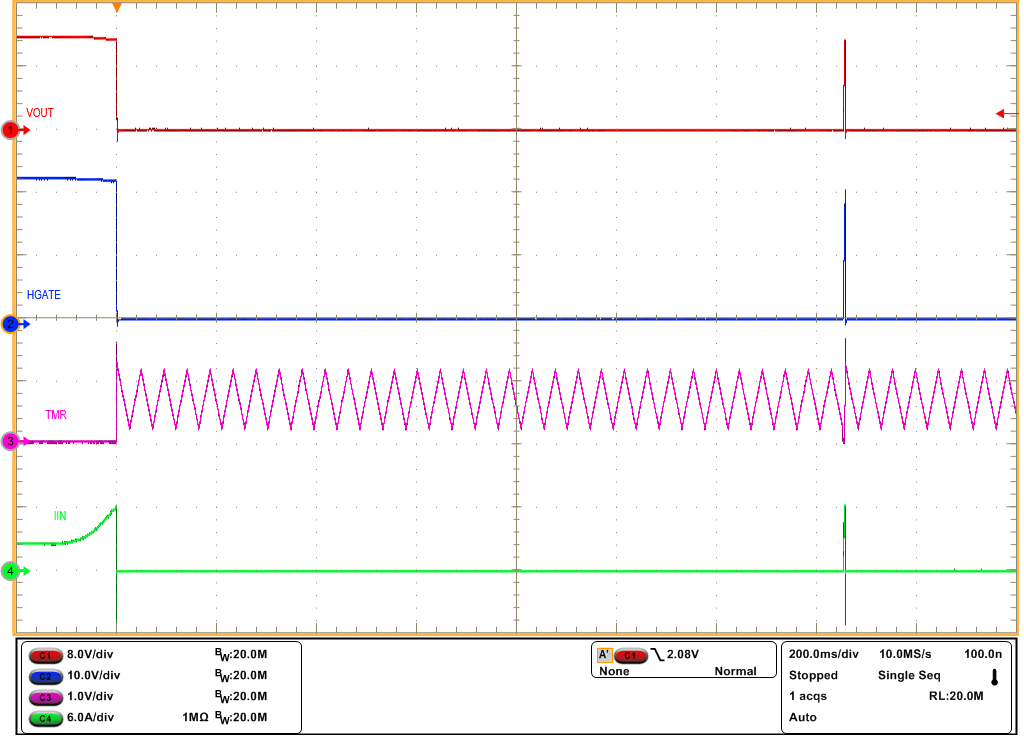SLUUCW6 November 2023 LM74930-Q1
2.3.3 Overcurrent Protection Test
Use the following instructions to perform the overcurrent test on the LM74930Q1EVM.
- Set the input supply voltage VIN to 12 V and current limit of 10 A.
- Turn ON the power supply and observe start-up of output voltage, HGATE, and DGATE.
- By default the EVM is configured for 4-A overcurrent protection.
- Apply 4-A load at the output with rheostat or electronic load and gradually increase the load current to 6 A.
- Observe the overload behavior of LM74930-Q1.
Figure 3-5 and Figure 3-6 show test waveforms for an overcurrent fault.
 Figure 2-5 Overcurrent Response of
LM74930-Q1 for a Load Step
From
3.8 A to 6 A With 4-A Overcurrent Protection Setting
Figure 2-5 Overcurrent Response of
LM74930-Q1 for a Load Step
From
3.8 A to 6 A With 4-A Overcurrent Protection Setting Figure 2-6 Auto-Retry Response of
LM74930-Q1 for an Overcurrent Fault
Figure 2-6 Auto-Retry Response of
LM74930-Q1 for an Overcurrent Fault